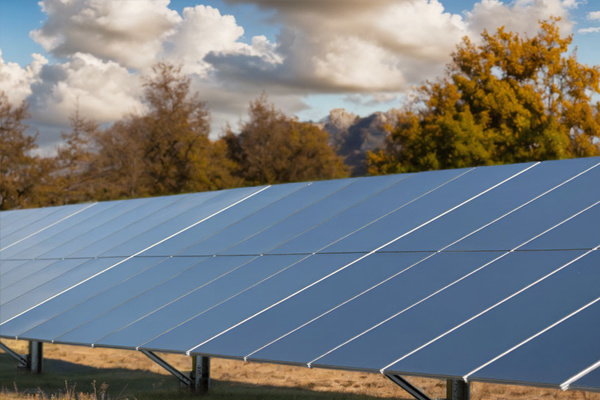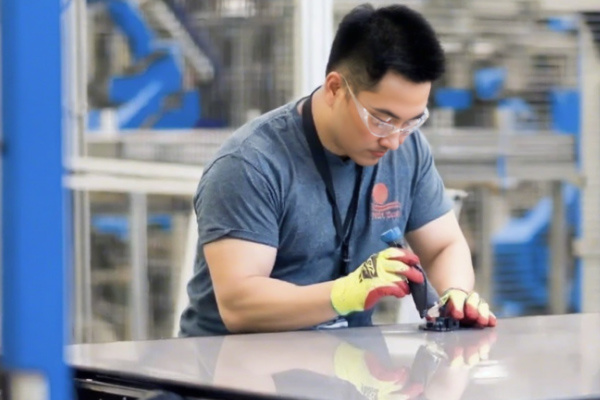BIPV becomes a new engine for green buildings, with multi-scenario applications flourishing
2025-07-11
Under the guidance of the national "dual carbon" goals, Building Integrated Photovoltaics (BIPV), as an important means to achieve energy saving and emission reduction in the building sector, is ushering in unprecedented development opportunities. Recently, related industry reports predict that by 2030, the market size of China's BIPV is expected to reach 400 billion yuan, with penetration rising from 0.1% in 2020 to 5%, becoming a core force driving the development of green buildings.
Under the guidance of the national "dual carbon" goals, Building-Integrated Photovoltaics (BIPV) is emerging as a crucial means to achieve energy saving and emission reduction in the building sector, ushering in unprecedented development opportunities. Recently, industry reports predict that by 2030, China's BIPV market size is expected to reach 400 billion yuan, with penetration rising from 0.1% in 2020 to 5%, becoming a core force driving the development of green buildings.
BIPV technology organically integrates photovoltaic power generation systems with building envelope structures, transforming buildings from mere energy consumers into green carriers with power generation functions. Compared to traditional photovoltaic systems (BAPV), BIPV not only achieves perfect integration of photovoltaic modules with building aesthetics, enhancing architectural value, but also offers significant advantages in structural safety, waterproofing and fire resistance, and total lifecycle costs.
In recent years, national and local governments have introduced a series of policies to vigorously promote BIPV development. The "Implementation Plan for Carbon Peak in Urban and Rural Construction" released in 2024 clearly states that carbon emissions in the urban and rural construction sector will peak by 2030, and a comprehensive green and low-carbon transformation will be achieved by 2060. BIPV, as a key technology for building energy saving, is listed as a priority promotion direction. Starting from 2025, all new urban buildings in China will fully implement green building standards, requiring photovoltaic coverage on roofs of new public institution buildings and factories to reach 50%, with a significant increase in renovation area of existing buildings. Local governments accelerate BIPV market penetration through financial subsidies, tax incentives, and other measures, not only reducing investment costs for enterprises but also promoting large-scale application of BIPV technology.
In terms of technological innovation, industry leaders such as LONGi and SENTE have continuously increased R&D investment to drive product iteration and upgrades in BIPV. Taking LONGi's Longding 5 as an example, this product is equipped with HPBC 2.0 cell technology, achieving a maximum mass production power of 660W and a highest conversion efficiency of 24.6%. Its frameless anti-dust design significantly reduces the impact of dust on power generation efficiency, increasing output by 6%. The full-roof coverage design makes full use of building space, increasing installed capacity by 20% under the same roof area. Meanwhile, Longding 5's innovative flexible connection technology, plier-type clamping, and finite element non-slip support roof structure have successfully passed an 11.2kPa wind uplift test, capable of withstanding super typhoons of level 17, and have established a rigorous triple fire protection system to comprehensively ensure building and energy safety. Additionally, the product features a minimalist design with no front grid lines and no main grid on the back, paired with a pure panel surface, adding a unique modern aesthetic to buildings and supporting customized colored modules to meet different architectural style needs.
The application scenarios of BIPV are increasingly diverse, covering industrial and commercial factories, public buildings, residential areas, and more. In the industrial and commercial sector, large factory roofs provide vast application space for BIPV. Enterprises can achieve self-generated and self-used electricity through BIPV projects, reducing electricity costs, and gain additional income by feeding surplus power into the grid, enhancing their green image. Public buildings such as schools, hospitals, and libraries have high requirements for building appearance and energy sustainability. BIPV technology meets their energy-saving needs while showcasing technological and environmental concepts. In the residential sector, as residents increasingly pursue green living quality, household BIPV products such as Skyworth Photovoltaic's "Little Sun Building" and LONGi's "Longjin" series have emerged. These products combine photovoltaic functions with roof architecture and balcony decoration, providing families with aesthetically pleasing, practical, and long-term beneficial energy solutions, while also addressing traditional issues like roof waterproofing and insulation.
With the rapid market development, competition in the BIPV industry is becoming increasingly fierce. Besides the continuous deep cultivation by traditional photovoltaic companies, more and more construction and building materials enterprises are crossing over into the BIPV field, integrating industry chain resources to create one-stop solutions. Industry consolidation is accelerating, and companies with strong R&D capabilities, brand influence, and comprehensive service networks will dominate the market competition.
Looking ahead, with continuous strengthening of policy support, ongoing technological breakthroughs, and deepening market applications, BIPV will play an increasingly important role in the building sector, helping China achieve its carbon peak and carbon neutrality goals as soon as possible, and promoting the comprehensive transformation of the construction industry towards green, low-carbon, and intelligent development.
More News
2025-07-11
Under the guidance of the national "dual carbon" goals, Building Integrated Photovoltaics (BIPV), as an important means to achieve energy saving and emission reduction in the building sector, is ushering in unprecedented development opportunities. Recently, related industry reports predict that by 2030, the market size of China's BIPV is expected to reach 400 billion yuan, with penetration rising from 0.1% in 2020 to 5%, becoming a core force driving the development of green buildings.
2025-07-11
In recent years, the global market for cadmium telluride photovoltaic glass has shown strong growth momentum, demonstrating significant development potential. As a new type of photovoltaic material, cadmium telluride photovoltaic glass has attracted increasing attention under the global energy transition backdrop due to its high photoelectric conversion efficiency, relatively low cost, and wide range of applications.
2025-07-11
Recently, cadmium telluride power-generating glass has been widely used in green energy and building photovoltaic integration projects due to its unique properties, and its working principle has attracted extensive attention. Cadmium telluride power-generating glass typically uses a "sandwich" structure, adding a layer of cadmium telluride film only a few micrometers thick between two pieces of glass to achieve power generation. Professor Zhu Lei from the School of Civil and Transportation Engineering at Beijing University of Civil Engineering and Architecture explained that the thin-film battery is the core of cadmium telluride power-generating glass, and its basic function is to convert solar energy into electrical energy. When sunlight shines on the surface of the film, the incident photons excite electrons in the film, causing them to move and thus generate an electric current.









